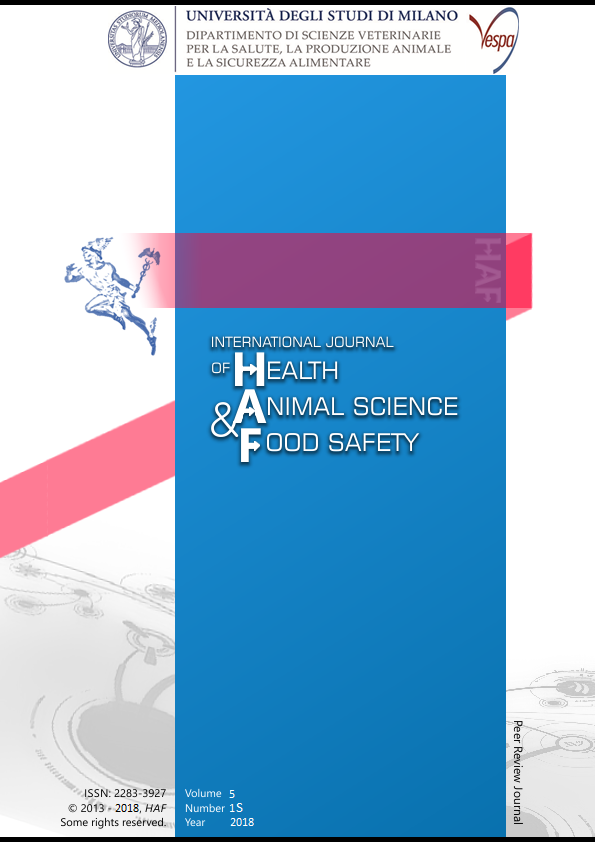Abstract
Pyloric stenosis is rarely reported in horses (Bart et al 1980; Bezdecova et al. 2009). Congenital and acquired conditions have been described (Church et al 1986; Heidmann et al 2004; Laing et al. 1992; McGill et al. 1984) clinical suspicion is based on clinical findings while definitive diagnosis is reached by exploratory laparotomy and gastroscopy. The use of other diagnostic techniques has never been described. Two foals were admitted for recurrent abdominal pain. Clinical and ultrasonographic (US) examinations were performed. Foals underwent Computed Tomography (CT) of the abdomen, both native and Helical Hydro-CT. US revealed mild stomach distension, mild small bowel wall thickening; small intestine obstruction was suspected in both foals. Case 1, two-month old Thoroughbred filly 130 kg of weight: CT showed segmental concentric pylorus stenosis, at the pyloric duodenal junction level. Mild liquid distension of the pyloric antrum and mixed gas and fluid distension of the cranial duodenum. During necroscopy the pyloric antrum showed stenosis due to an inelastic constricting ring reducing the lumen of the pyloric canal. The glandular part presented mild acute catarrhal gastritis. Case 2, three-month old Italian Saddle colt 142 kg of weigh: CT showed small amount of intraluminal hyperattenuanting material within the gastric fundus and duodenum. Hydro-CT highlighted the presence of mild pylorus narrowing, mild distension and moderate mucosal irregularities of the pyloric antrum. An acquired pyloric stenosis secondary to chronic gastritis of unknown origin was suspected. Explorative laparotomy was performed; the antrum was mildly distended and the pylorus appeared narrowed and hard on palpation; gastrojejunostomy was performed. Ante-mortem diagnosis of pyloric stenosis in horses is challenging because aspecific clinical signs. Native CT allowed to investigate both the stomach and the small intestine and, in one case, outlined the presence of pylorus stenosis. In case 2, only Helical Hydro-CT allowed better evaluation of the pyloric thickness. CT and Helical Hydro-CT can be considered a useful diagnostic tool in foal with clinical suspicion of pyloric stenosis.
Riferimenti bibliografici
Barth, A.D., Barber, S.M., McKenzie, N.T. 1980. Pyloris stenosis in a foal. Can Vet J. 21:234-236
Bezdekova, B., Hanak, J. 2009. Pyloric stenosis in horses: a seven case reports. Veterinarni Medicina. 54:244-248.
Church, S., Baker, J.R., May, S.A. 1986. Gastric retention associated with acquired pyloric stenosis in a gelding. Equine Vet J. 18:332-334.
Heidmann, P., Saulez, M.N., Cebra, C.K. 2004. Pyloric stenosis with reflux oesophagitis in a Thoroughbred filly. Equine Vet Educ. 16:172-177
Laing, J.A, Hutchins, D.R. 1992. Acquired pyloric stenosis and gastric retention in a mare. Aust vet J. 69:68-69
McGill, C.A., Bolton, J.R. 1984. Gastric retention associated with a pyloric mass in two horses. Aus. vet J. 61:190-195
This work is licensed under a CC BY-SA 4.0 international

